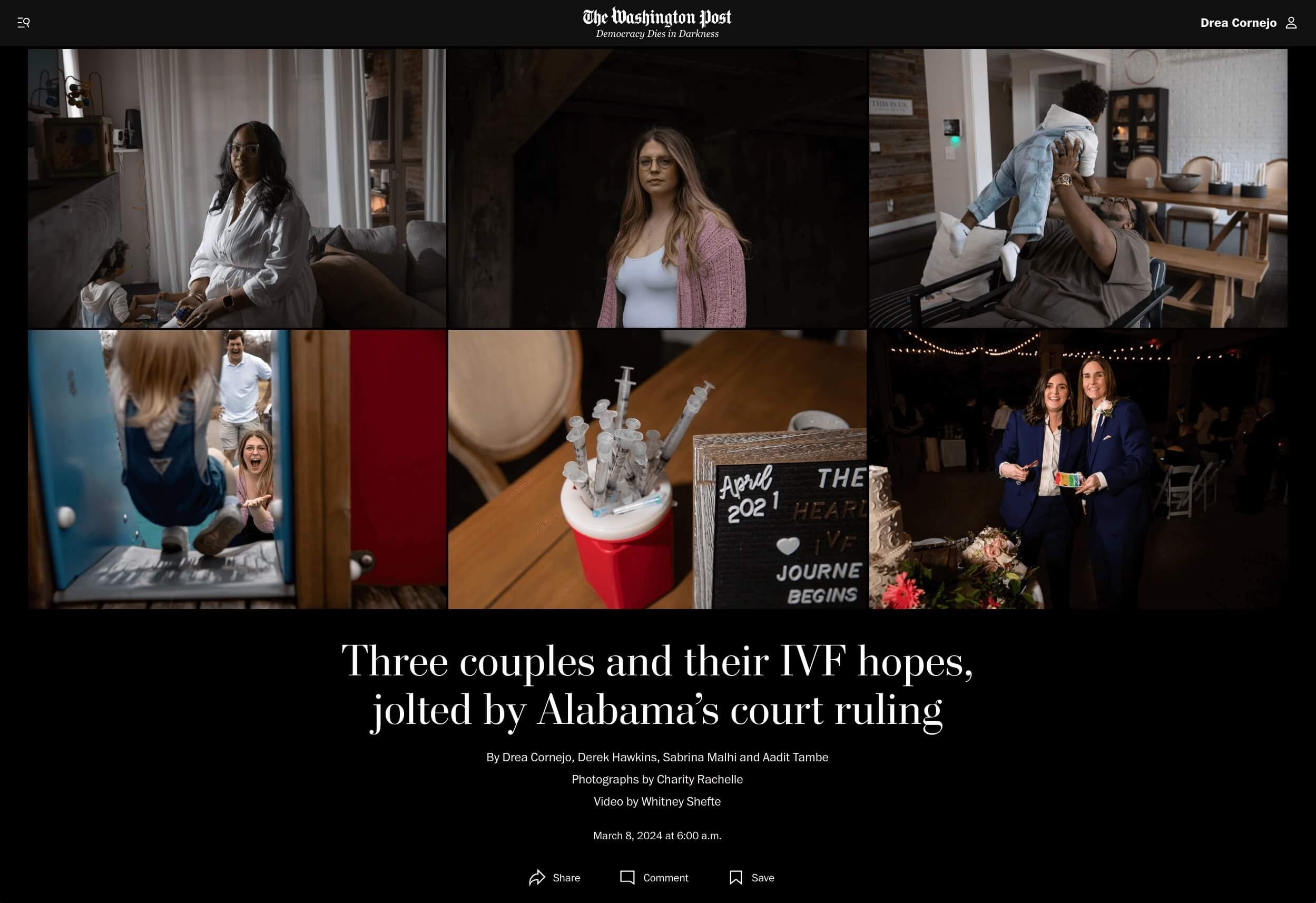Three couples and their IVF hopes, jolted by Alabama’s court ruling
ROLE: Producer, co-cinematographer, & editor
IVF treatments gave a cancer patient left infertile a chance to grow her family. It renewed hope in a mother who had struggled to conceive. And it offered a lesbian couple a path to pregnancy.
Then, on Feb. 16, the Alabama Supreme Court weighed in. With its chief justice quoting from the Bible, the state’s top court ruled that frozen embryos created through in vitro fertilization are legally children and that people could be held liable for destroying them.
Here are the stories of three Alabama families whose lives were shaken by the court ruling.
ROLE: Cinematographer & editor
A pageant queen took her own life. Her mom continues to write her story.
In 2019, nearly 3 million viewers tuned in to see Cheslie Kryst become the oldest Miss USA in history at 28. That twirling girl would go on to become a Division I track athlete, a lawyer and an entertainment correspondent.
Then, in 2022, Cheslie took her own life.
In the two years since her death, there have been times that her mother, self-assured as she is, has spiraled. At her lowest, April Simpkins thought she might join her daughter.
This is a story of how one mom kept herself above ground — and how she’s determined to save other families from the same pain she experienced.
ROLE: Editor
Riot police and over 2,000 arrests: A look at 2 weeks of campus protests
In the 15 days since police arrested dozens of Columbia University students protesting Israel’s military bombardment of Gaza, officers have cleared similar encampments at colleges and universities around the nation.
What began as pro-Palestinian demonstrations has grown into a nationwide movement, drawing attention to campuses that are thick with tensions not only over the war but also over whether the protesters are creating distractions or even dangers for other students..
“You have lit a flame you cannot hope to control,” read one campus message for school leaders.
ROLE: Cinematographer & editor
Flamingos have appeared throughout Florida in places where they haven’t been seen in decades. They’ve been photographed within eyeshot of office buildings in Tampa Bay, hanging out with pelicans near Sanibel Island and sharing a sandspit with great blue herons just miles away from the Kennedy Space Center.
Researchers believe the new arrivals blew in with Hurricane Idalia last August, probably from Mexico or the Bahamas, where conservation efforts over the past 50 years have helped flamingo populations recover from near extinction. It wasn’t the first time a powerful storm swept the birds to Florida. But in most of those instances, the flamingos left after only a few days.
This time, they stayed.
How FLORIDA IS GETTING ITS PINK BACK
ROLE: Producer, cinematographer & editor
The pandemic had forced them from their home. Then they had run out of money for a motel. That left the car, which is where Sergine Lucien, Dave Marecheau and their two children were one recent night, parked in a lot that was tucked behind a row of empty storefronts.
The spot was six miles from the main gate of a shuttered Walt Disney World, the engine of Orlando’s vast tourism economy, which in the best of times had struggled to keep its armies of low-wage workers housed, clothed and fed.
Now the pandemic was revealing just how fragile and cruel that economy could be, as thousands of those workers found themselves on the edge of eviction and homelessness, living in cars or squatting in abandoned motels.




